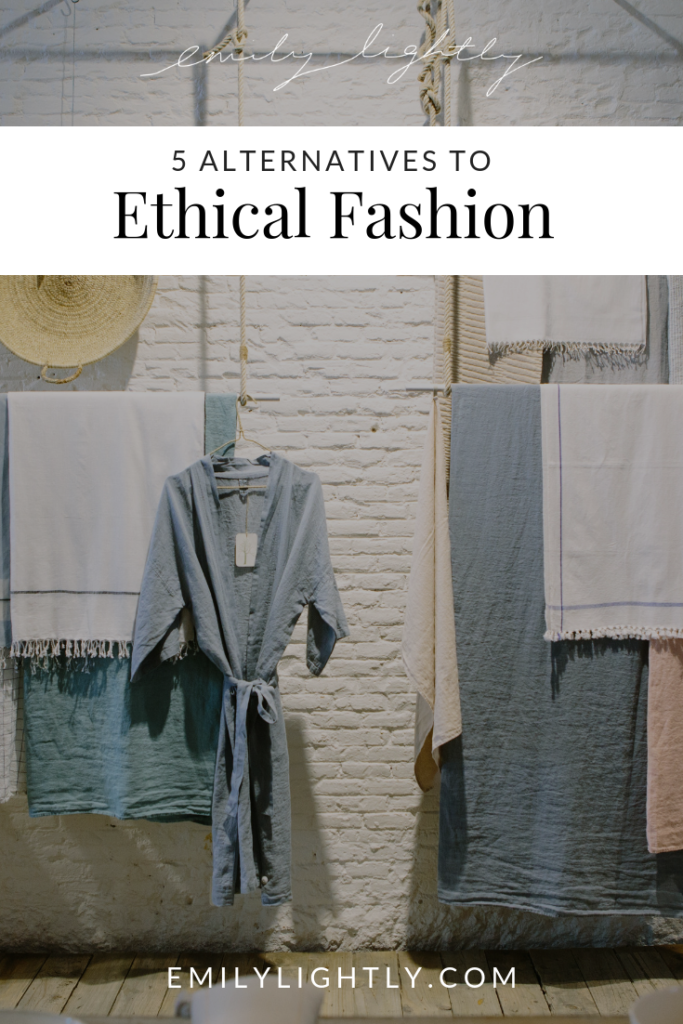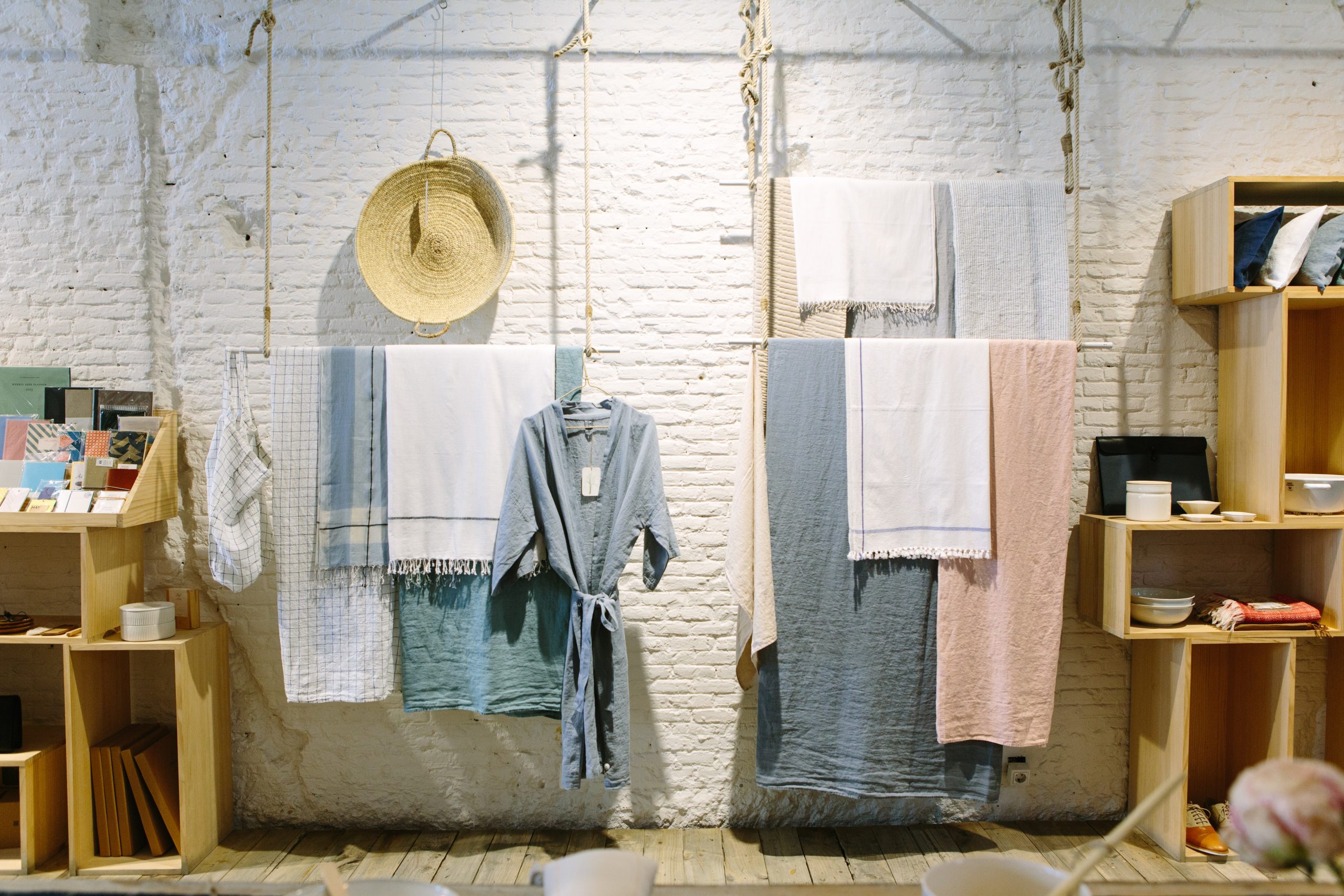There are many benefits to ethical fashion, the most obvious being fair wages and good working conditions for employees, as well as more sustainable production practices. But ethical fashion also has a surprisingly negative side. Ethical brands have been criticized (and rightly so) for being exclusive in their marketing and the styles they offer. This article explains in more detail how the lack of diversity in ethical fashion is so problematic.
Another way that ethical fashion is exclusive is its high price tag. It makes sense for ethically-made clothing and accessories to be expensive, and there are many reasons why it is so. They are made in factories with good working conditions that offer proper living wages for employees. Sustainably-sourced materials may be more costly to procure. Clothing might take longer to produce, meaning that to stay afloat a business needs to charge more per item. All of these costs get passed on to the consumer, which makes ethical fashion less accessible.
I’ll be the first to admit that as much as I’d love to buy ethical all the time, sometimes it just doesn’t work within my budget. Living in Canada makes it harder as many ethical brands come with a US price tag. There have been times when I’ve had the best intentions to purchase an ethical piece, but then opted for something more wallet-friendly instead.
There’s nothing wrong with saying that ethical fashion is out of our price range. Ethical fashion is a privilege (see Selflessly Styled’s excellent article on this). Money isn’t everything in this world, and our worth is not determined by how much or how little we make. And even if we have the means to buy ethical fashion, we might not want to buy it – for many reasons, but not least of all the lack of diversity I mentioned before.
There are plenty of ways to make your closet more ethical without completely breaking the bank – whether you can’t afford it, don’t feel represented, or just don’t want to spend that kind of money on clothing and accessories.
That said, there are plenty of ways to make your closet more ethical without completely breaking the bank – whether you can’t afford it, don’t feel represented, or just don’t want to spend that kind of money on clothing and accessories. Here are my top five alternatives to ethical fashion that still allow for a more environmentally and socially conscious closet.
1. Wear what you own
The number one most ethical and sustainable thing you can do is to wear what you already have. If you’re stuck in the cycle of constantly buying new stuff, give a capsule wardrobe a try. It helped me fill my closet with fewer items that work together and that I love to wear, which reduces that feeling of needing to buy new things all the time. My FREE guide, 5 Steps to a Simpler Wardrobe, is a great tool to help you get started. You can also read my article with tips on how to get over wardrobe boredom if you really feel in a slump.
If you’re stuck in the cycle of constantly buying new stuff, give a capsule wardrobe a try. It helped me fill my closet with fewer items that work together and that I love to wear.
2. Shop secondhand
Thrifting isn’t for everyone – it takes time and effort to find the perfect piece, which means you might have to hold out for something you need. But, it’s also way less expensive than buying new, and is a much more sustainable and ethical way to shop. I personally have fallen in love with thrifting and find it to be really fun. Try exploring some of your local thrift and charity shops and just see what kind of treasures you can find.
There are also a lot of online thrift stores where sellers do the work for you in curating the best pieces, but these tend to come with a slightly higher price tag as well. I like to shop on Depop, and there are also a couple of Instagram stores I follow (Dainty Insight and The Oak Closet are two of my faves!)
3. Take good care of your clothes
This is similar to number one, but it’s more about reducing the need to replace your clothing. By taking proper care of what you have, you can prolong its life and get more use out of it. Things like following the washing label and learning to mend your own clothes will give your pieces some added longevity and keep them looking newer for longer. This article has some more tips to help you out in this area.
4. Buy what you can afford
Living within your means is so important and is one the ways I’ve simplified my life. For those of us who can’t make the kind of investment necessary to buy ethical fashion, you can still buy from fast fashion brands. The way to balance it out is to look for high-quality pieces that will last, both in terms of construction and style. Here is a great article with plenty of practical tips on how to shop for high quality clothing. In doing this, your pieces will again last longer and reduce the need for you to replace them as often.
You can still buy from fast fashion brands. The way to balance it out is to look for high-quality pieces that will last, both in terms of construction and style.
5. Do it yourself
If you are a creative type or enjoy taking on new projects, try making your own clothing and accessories. Take up a new hobby like knitting, crocheting, or sewing. There are a lot of easy patterns out there to follow – I personally like Indie Sew for patterns and Simplifi Fabric for materials. I’ll admit that this one is the least practical because it’s time-consuming and requires skill. But there is something to be said for how rewarding it is to have created something yourself, and the creative process has many benefits in and of itself.
Additional Tips
If you’re new to ethical fashion and don’t know where to start, take time to do a little bit of research. There are a lot of ethical and sustainable brands out there, and new ones are cropping up all the time. Some of them are more affordable: Everlane is a good option in the US (although they ship globally), and Encircled is based in Canada. The Good On You app is a great way to find brands, as is The Eco Hub’s brand directory.
My last tip is to evaluate your shopping habits. If your wallet is taking too much of a hit or you’re feeling financially squeezed, it might be an indicator that you need to slow down. If you’re spending a lot on non-essentials, try taking a spending break and only buy necessities, like groceries and living expenses. This will show you how much (or little) you really need to get by, and while it won’t make ethical fashion any less expensive, it might give you a little more flexibility to afford that choice if it’s important to you.
I hope you enjoyed this article and found one or two alternatives to ethical fashion that could work for you! I’d love for you to tell me in the comments how you make your closet more ethical and/or sustainable.
Thanks for reading,
Emily
Pin for later

Featured photo by Jason Briscoe on Unsplash

